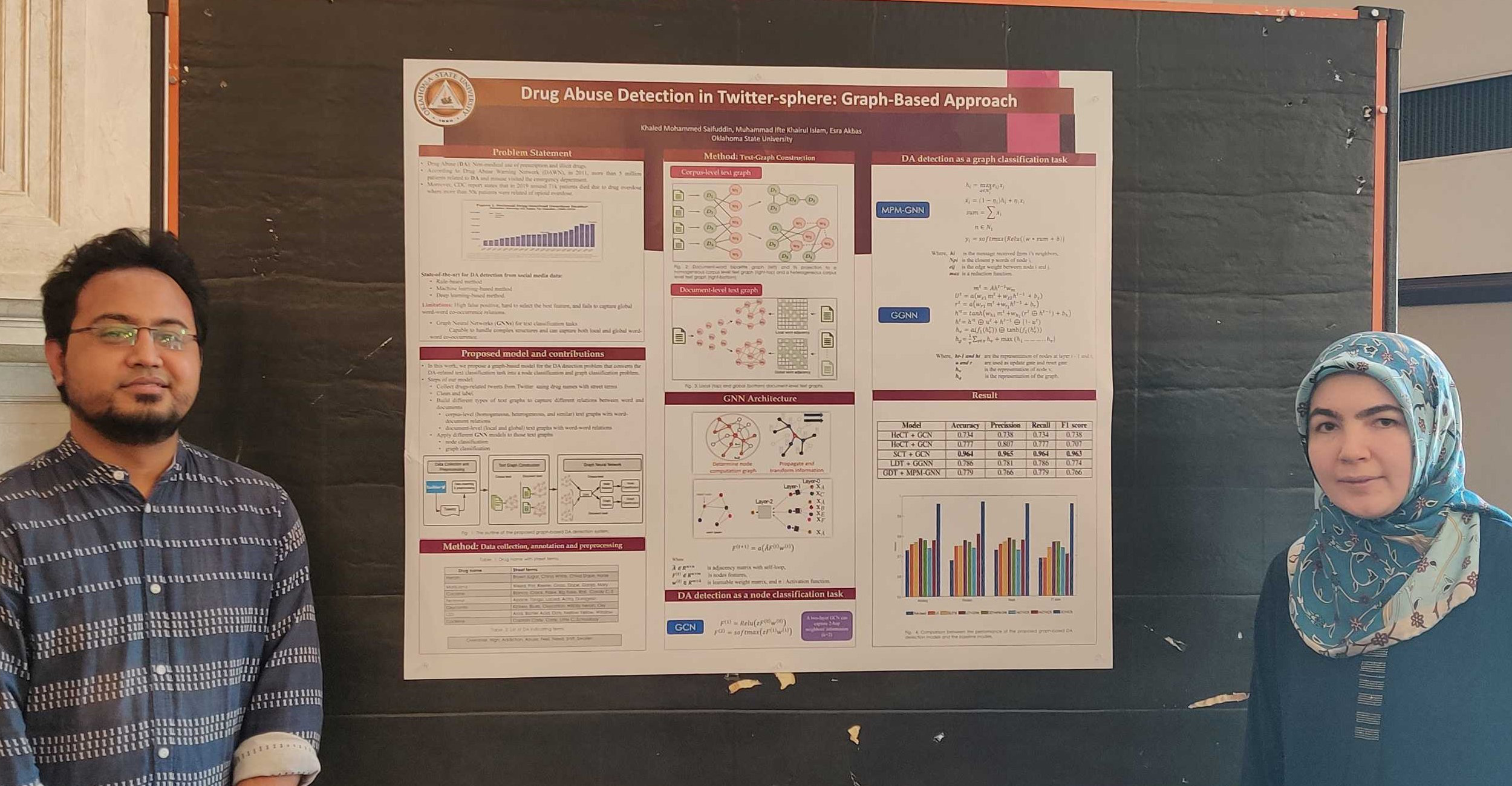
Two students place in the 2022 CADRE Student Data Awards competition
Wednesday, May 25, 2022
Media Contact: Jordan Bishop | Editor, Department of Brand Management | 405-744-7193 | jordan.bishop@okstate.edu
The Oklahoma State University Coalition for the Advancement of Digital Research and Education (CADRE) recently partnered with Dell Technologies and Intel to recognize the exceptional use of data science and computing by two students.
This year in CADRE 2022, Khaled Mohammed Saifuddin — a Ph.D. candidate in the Department of Computer Science — won the first place Dell Intel Student Award for Outstanding Use of Data Science and Computing for his research work with advisor Dr. Esra Akbas, “Drug Abuse Detection in Twitter-sphere: Graph-Based Approach.”
The rate of non-medical use of opioid drugs has increased markedly since the early 2000s. Recently, the U.S. government declared a national emergency to slow down the death rate related to drug abuse (DA). In this research work, Khaled presented a graph-based unique model that can automatically detect DA from openly available social media data.
At first, to accomplish the target, a significant amount of Twitter posts were collected based on a list of keywords that included some drug names and drug abuse terms as well. After that, the text data were represented as graph data called text graphs, which are capable of handling complex structures and capturing local and global word-to-word co-occurrence.
Two different types of text graphs were constructed from the tweets: document-level text-graph and corpus-level text graphs. Afterward, different Graph Neural Networks were applied to get the representation of nodes and graphs.
Finally, the representations were passed to a machine learning classifier to classify whether a tweet related to DA or not. Thus, the text classification problem was presented as a node and graph classification problem.
The experimental result shows that the proposed model outperforms the state-of-the-art baseline models with a maximum accuracy of 96.4%, almost 20% better than the baselines.
Ishraque Zaman Borshon — a Ph.D. student in mechanical and aerospace engineering — received the second-place Dell Intel Student Award for Outstanding Use of Data Science and Computing for his research work, “Machine Learning Algorithm Development for Upward Facing High-Temperature Cavity Receiver for Scheffler Concentrators.”

This technology starts with a parabolic dish, which is used to reserve the sun’s energy by using curved mirrors to direct the energy to a receiver. The upward-facing receiver is responsible for capturing solar thermal energy in the most efficient and feasible way. Designing the receiver requires extensive calculations and is known for being expensive. One mistake in the design could cost millions of dollars. In his research work, Borshon created software to efficiently calculate heat loss from a complex solar heat exchanger.
The first step in Borshon’s process was to identify the three main variables that contribute to convective heat loss, which were determined to be surface temperature, tilt angle and the flow rate.
Conduction is the process of losing heat through physical contact with another object or body. Convection is the process of losing heat through the movement of air or water molecules across the skin.
Data was collected and placed into different models to determine the most accurate method of finding the convective heat loss. The data determined that the physics number-based model and the random forest model were most fit for the development.
After collecting the data and creating the necessary models, Borshon created a software where users can enter predictions for each of the different variables to see the predicted heat loss, nusselt number (measure between heat transfer by convection and conduction) and the convective heat transfer coefficient.
The heat loss prediction software can be found here: share.streamlit.io/ishraque2008/random_forest_heat_transfer/main.py.
For more information on the OSU Department of Computer Science, go to cas.okstate.edu/department_of_computer_science/. To learn more about OSU's School of Mechanical and Aerospace Engineering, go to ceat.okstate.edu/mae/.
Story By: Bailey Sisk | basisk@okstate.edu
